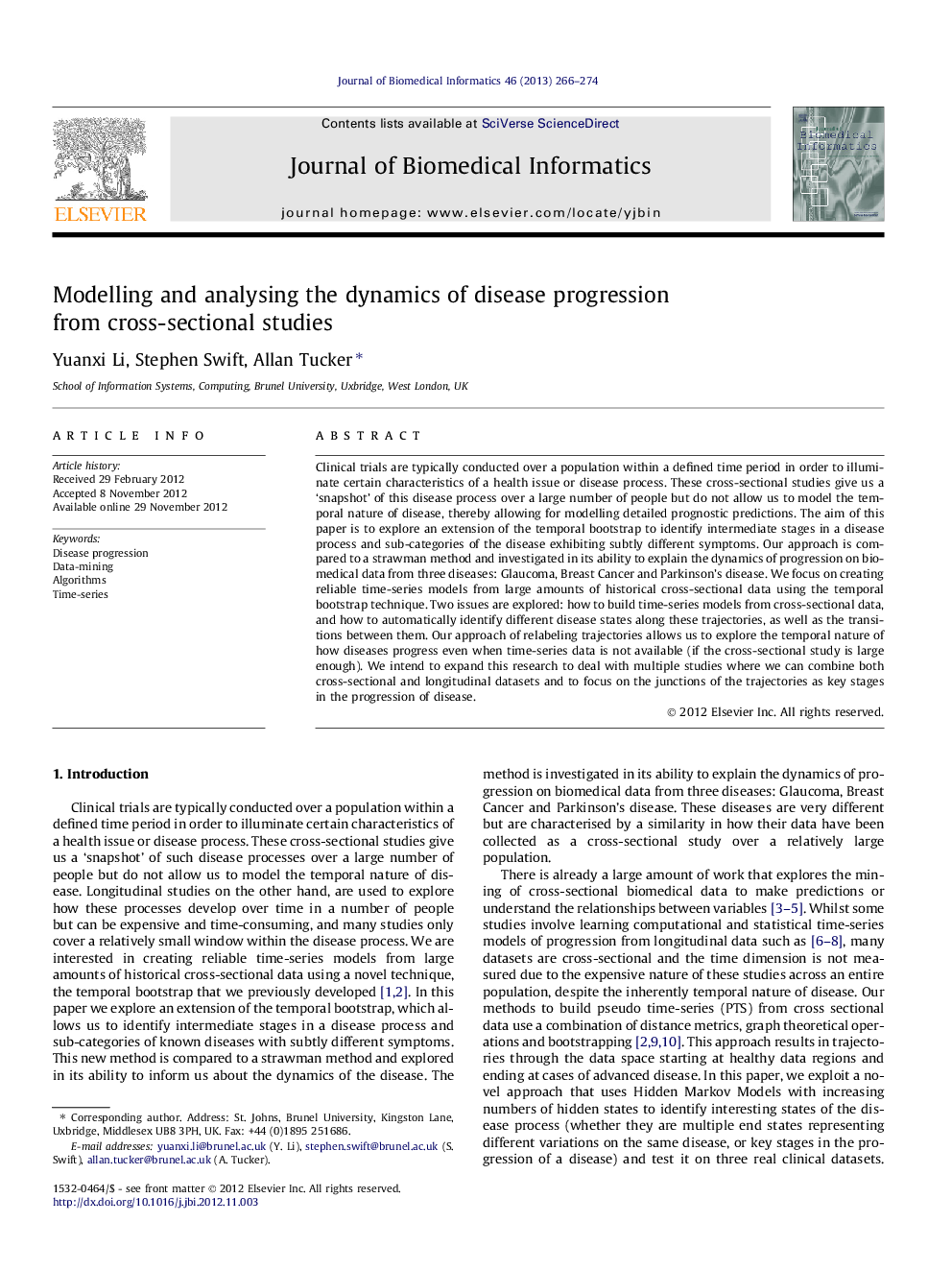| Article ID | Journal | Published Year | Pages | File Type |
|---|---|---|---|---|
| 518224 | Journal of Biomedical Informatics | 2013 | 9 Pages |
Clinical trials are typically conducted over a population within a defined time period in order to illuminate certain characteristics of a health issue or disease process. These cross-sectional studies give us a ‘snapshot’ of this disease process over a large number of people but do not allow us to model the temporal nature of disease, thereby allowing for modelling detailed prognostic predictions. The aim of this paper is to explore an extension of the temporal bootstrap to identify intermediate stages in a disease process and sub-categories of the disease exhibiting subtly different symptoms. Our approach is compared to a strawman method and investigated in its ability to explain the dynamics of progression on biomedical data from three diseases: Glaucoma, Breast Cancer and Parkinson’s disease. We focus on creating reliable time-series models from large amounts of historical cross-sectional data using the temporal bootstrap technique. Two issues are explored: how to build time-series models from cross-sectional data, and how to automatically identify different disease states along these trajectories, as well as the transitions between them. Our approach of relabeling trajectories allows us to explore the temporal nature of how diseases progress even when time-series data is not available (if the cross-sectional study is large enough). We intend to expand this research to deal with multiple studies where we can combine both cross-sectional and longitudinal datasets and to focus on the junctions of the trajectories as key stages in the progression of disease.
Graphical abstractFigure optionsDownload full-size imageDownload high-quality image (122 K)Download as PowerPoint slideHighlights► We investigate a novel approach to infer dynamics of disease progression on three biomedical datasets. ► We build time-series models from cross-sectional data. ► We automatically identify intermediate stages in disease processes. ► We automatically identify the transitions between the key stages in disease.
